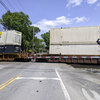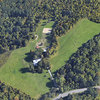Voorheesville looks to bolster pedestrian, biker safety
— From the village of Voorheesville
A plan currently in the works for Voorheesville looks to design streets for all users, all modes of transportation, and all ability levels. The plan balances the needs of drivers, pedestrians, bicyclists, transit riders, emergency responders, and goods movement based on local context.
VOORHEESVILLE — When finished, the Voorheesville Safe Streets Policy and Plan will provide the village with a roadmap to implement a multimodal safety program in the village.
Complete Streets, according to the Capital Region Transportation Council, (CRTC — formerly the Capital District Transportation Council), are streets designed for all users, all modes of transportation, and all ability levels. Complete Streets balance the needs of drivers, pedestrians, bicyclists, transit riders, emergency responders, and goods movement based on local context.
New York state passed a Complete Streets law in 2011, which requires that roadway-improvement projects include safe accommodations for all users, including bicyclists, pedestrians, and transit riders.
Voorheesville currently is in the process of putting together its own Complete Streets plan, which Mayor Rich Straut said is targeted at bicycle and pedestrian safety.
Straut said the number-one concern he hears about from village residents is speeding.
“Pedestrians feeling unsafe, bicyclists feeling unsafe,” he said, “we’ve had some people hit by cars,” so that’s what the Complete Streets initiative is targeted at.
The plan will address the entire village, but the primary focus of the preliminary design will be on Maple Avenue, Voorheesville Avenue, and Main Street; the area around the Voorheesville Elementary School, the rail-trail crossing, the CSX overpass over 85A, “trying to figure out how to get trucks not to approach the bridge … especially not hit the bridge,” Straut said.
While the plan focuses on pedestrian and bicycle safety primarily, Straut said, it addresses traffic safety overall.
As for what that focus entails, Straut said that will be determined by the recommendations made in the study.
“Whether it’s bike lanes, whether it’s narrowing the lanes, street trees, it’ll really focus on traffic-calming,” the mayor said. “How do we slow people down and make it safer for bikes and pedestrians?”
The answer, Straut said, will be for the engineers and planners who design the pan to address.
For example, if it’s bike lanes, the engineer and planner will come up with concept designs to show how the bike lanes could work in the right-of-way.
Straut, an engineer himself, said one recommendation he could see made is narrower lanes. “That tends to slow people down,” he said, but he added the state Department of Transportation may not want to see the road narrowed because Route 85A, also known as Maple Avenue, is a truck route.
Straut said there is a working group tasked with coming up with the plan, including representatives from the village board as well as a village resident, Voorheesville’s Department of Public Works, Albany County, the state DOT, and the Capital Region Transportation Council, which is managing the project.
Getting the state on board with traffic-calming measures to slow down drivers seems like a heavy lift but, Straut said, while historically, that may have been the case, the DOT does have a policy that requires the department to take into consideration the comprehensive plan on the community in which it’s working — and traffic measure are a focus of the village’s comprehensive plan.
Straut said he understands truck traffic has to make its way through the village but, if it came through Voorheesville at a slower pace, “I think [that] would help slow down the other traffic as well.”
While he acknowledged there are hurdles to overcome, Straut said that’s one reason the village has engineers and architects, from Creighton Manning, working on the plan.
“They do a lot of work with DOT and DOT standards,” he said. “So, I think they’ll be able to really help flesh that out in a way that could be implemented,” not proposing something that’s “pie in the sky,” because that “doesn’t help anybody.”
Adopting the complete streets plan should help the village as it works to obtain future grants, like the million-dollar grant it recently received for sidewalks.
The improvement money will help replace some of the broken walkways along Maple Avenue from Stonington Hill Road to the CSX overpass.
The sidewalk on North Main Street over CSX’s rail line will also be extended, connecting the rail-trail bike path while continuing along North Main to the small industrial park where Northern Barrell Brewery is located.
Then, said Straut, “Pine Street is a biggie.” That sidewalk goes from Voorheesville Avenue, down Pine Street, to Route 85A near Hannaford.
The project completes a loop in the village, Straut said.
Straut said of the Complete Streets plan, “It basically presents a plan that [says] ‘Hey, we’ve really been thinking of this, we’ve invested in it, and we have a realistic plan for it.’”
He said he anticipates the plan being done by the end of the year, at which time the village can apply for grants “using the document as part of our backup.”



